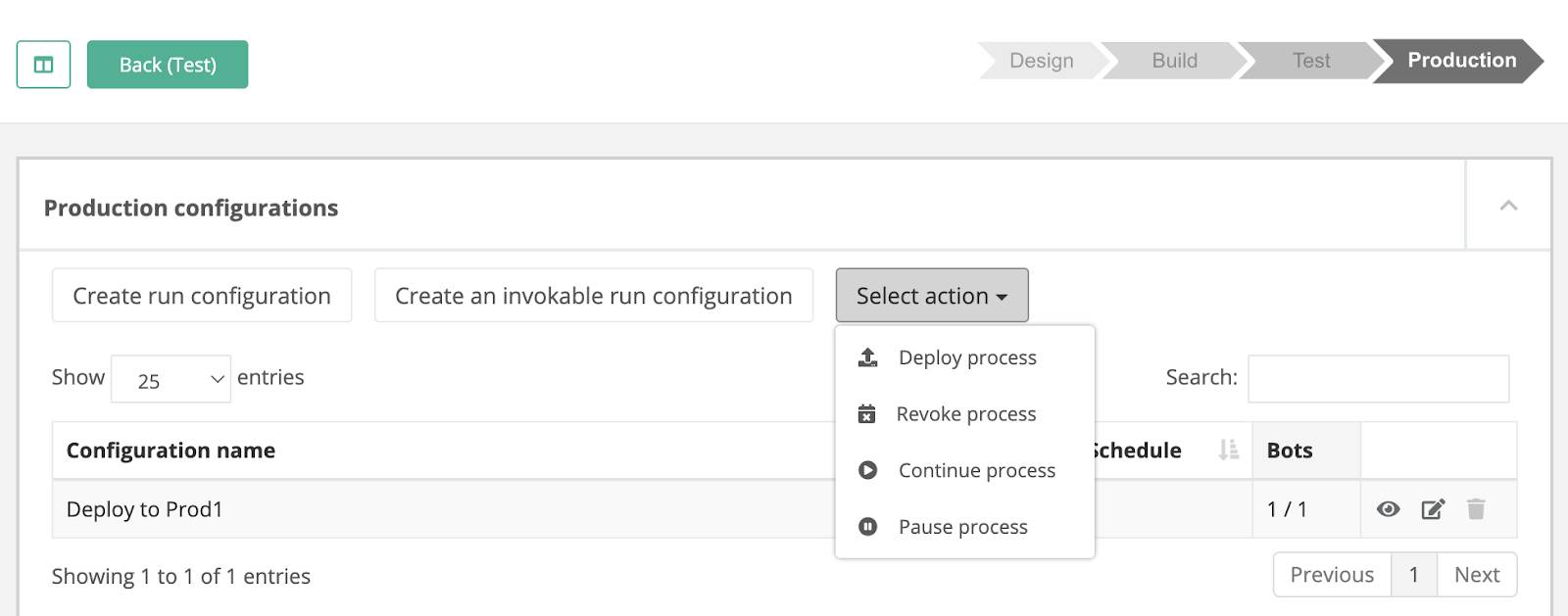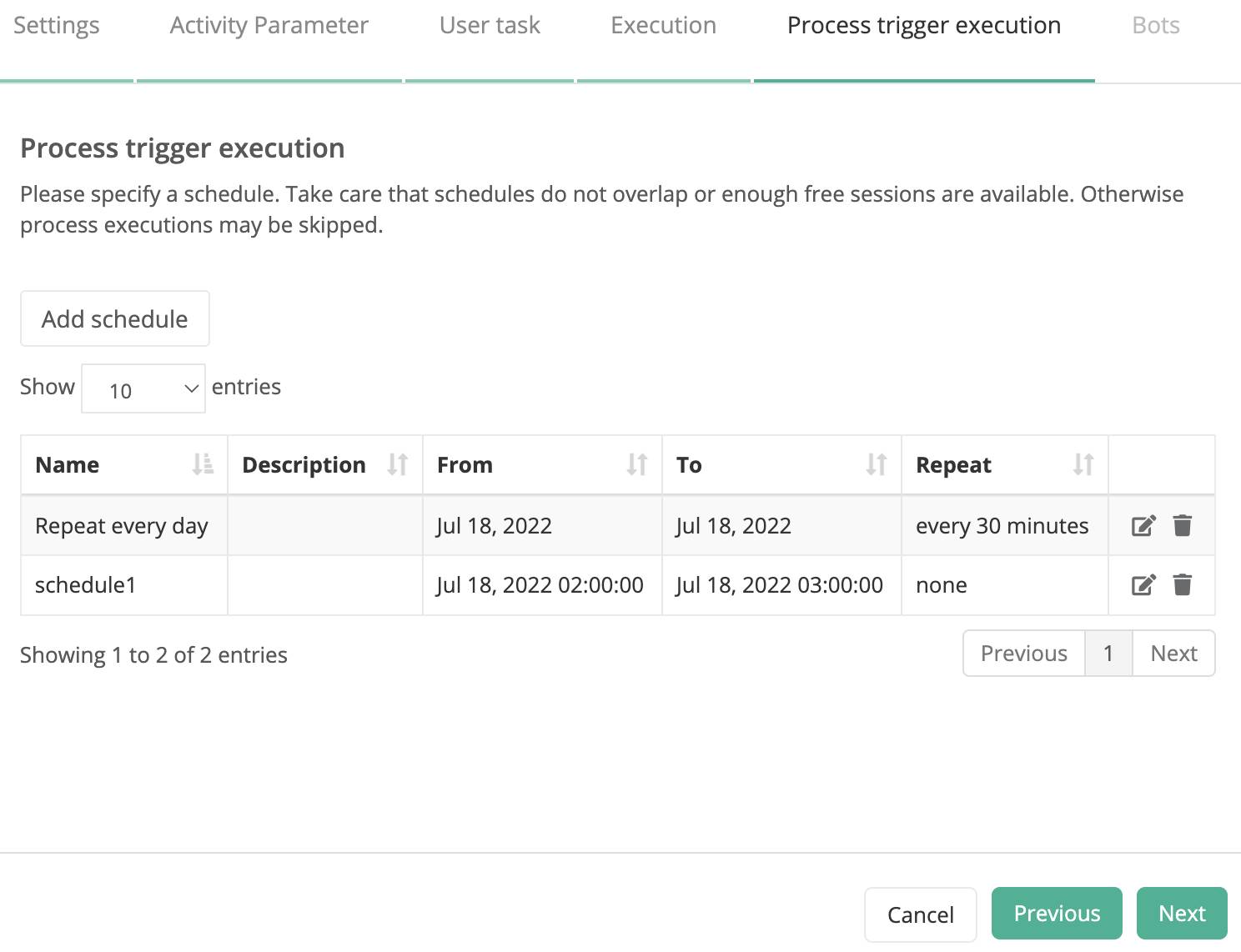Deploy Production-Ready RPA Processes to MuleSoft RPA Bot Instances
Learning Objectives
After completing this unit, you’ll be able to:
- Review Production phase tasks.
- Create a production configuration.
Review Production Phase Tasks
Deploying an RPA process to production mirrors the process required to test an RPA process. In both cases, you must set configuration parameters, deploy the process to an RPA bot, and monitor the performance of the process.
After publishing the process to production, the Project View updates to show the Production configurations and Run Results pages.

The following actions are available when setting up the production configuration.
| Action |
Description |
|---|---|
|
Deploy |
Deploys an RPA process to one or more RPA bots. |
|
Revoke |
Immediately stops the processing of the RPA process resulting in a “canceled” error message. |
|
Continue |
Resumes a temporarily paused RPA process. |
|
Pause |
Pauses the RPA process. Any in-flight processes are allowed to run to completion. |
Create a Production Configuration
You create a production configuration by clicking Create run configuration. A dialog box appears where you must specify the schedule for the RPA process. You can generate multiple schedules, but at least one is required.

For your process to run, its schedule shouldn’t conflict with the schedule of another RPA process in the session you deploy it to. If schedules conflict, some executions of the conflicting processes may be skipped because they can’t gain control of the session.
Select the RPA Bots
The final step is to select the RPA bots where you want to deploy the RPA process. To run RPA processes in parallel, deploy your RPA process to multiple sessions using the Assigned Sessions option. This option allows you to determine how many replicas of the RPA process should be deployed to the designated RPA bot. These replicas are then distributed among the available sessions on the bot.
Every RPA bot has a limited number of sessions available. If you deploy an RPA process to more sessions than are currently available, some process runs may be skipped.
Deploy an RPA Process
After you successfully create a production configuration, click Deploy in the production configuration in the Project view. After the process starts, the Run Results page displays the execution status.
If you move an RPA process back to the Test phase, all deployed instances of the process are automatically revoked.
Walkthrough
Take a look at this video demonstration showing how these tasks are performed by a runtime systems administrator. If you wish to follow along with text instructions, check out the walkthrough instructions.
Cleanup from the Walkthrough and Challenge
When you finish the walkthrough, be sure to follow the cleanup instructions to un-RSVP from any MuleSoft Meetup events that you don’t intend to actually attend. This video also demonstrates these cleanup steps.
In this unit, you learned how to create a production configuration for an RPA process and deploy it to an RPA bot. In the next unit, you learn how to generate RPA process schedules used for running production processes.
